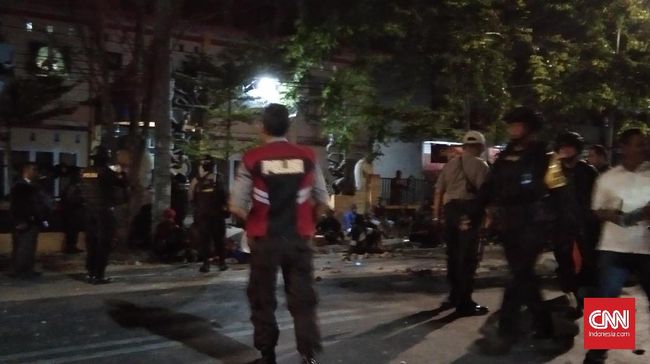 He is following in the footsteps of George H. W. Bush, who paid the price for his betrayal.
He is following in the footsteps of George H. W. Bush, who paid the price for his betrayal.
Following the model of George H. W. Bush, Donald Trump is taking a major step toward becoming a one-term president. Bush thought he could become more popular by betraying his promises to defend the Second Amendment. Trump now feels the same; according to theNew York Times, he has ordered his staff to work with Senate Republicans to pass a major gun-control package that would set the stage for gun confiscation.
Bush’s Good Talk and Hostile ActionLet’s remember how gun control worked out for George H. W. Bush. Like Trump, Bush had a long record of supporting some gun control; that record was part of the reason he lost the Texas Senate race in 1970 and the presidential primaries in 1980. Also as with Trump, the campaign that won Bush the presidency was strongly pro–Second Amendment: Shortly before running for president in 1988, Bush joined the NRA. His acceptance speech at the Republican Convention touted his devotion to gun rights. In a September 1988 public letter to the NRA, he promised to oppose gun bans and other forms of gun control.
Bush won the general election in a landslide against the inept Democratic nominee, Michael Dukakis, who as governor of Massachusetts had declared that only the police and military should have guns. Bush’s victory margin was so large that the pro–Second Amendment vote was not essential. Gun voters did, however, amplify Bush’s win by carrying him to victory in states such as Pennsylvania, Montana, and Maryland.
Bush’s campaign promises apparently meant little to him. A few weeks into the Bush presidency, the administration was set back on its heels by the Senate’s rejection of Secretary of Defense John Tower. Some conservative activists had raised concerns that Tower had a drinking problem, and that was the end of the nomination. So the White House cast about for what they thought would be a popular issue, and they chose gun control.
In Stockton, Calif., a seriously mentally ill career criminal had murdered elementary-school children in a schoolyard. If California had had a functional criminal-justice system, the criminal would have been behind bars and receiving mental-health treatment
Bush denounced what he called “automated attack weapons” — that is, guns with a military appearance. Although the guns looked like machine guns, they functioned differently, with a much slower rate of fire — the same rate as common handguns. But Bush couldn’t be bothered to know the difference between reality and appearance, and neither could many other politicians and the media. The same is true today.
Using administrative authority, Bush banned the import of so-called “assault weapons” — almost all of which actually had well-established use in hunting and target shooting. In the courts, the Bush administration’s lawyers insisted that individuals had no Second Amendment rights. Bush’s Department of Housing and Urban Development urged local public-housing authorities to prohibit tenants from owning firearms in their homes. Bush promoted an early version of what would later become the 1994 Clinton-Biden crime bill, including a ban on many ordinary firearms. The leading Republican supporter was South Carolina senator Strom Thurmond, the longtime segregationist and opponent of civil liberties.
In 1991, Bush soared to 89 percent popularity after winning the First Gulf War against Iraq’s Saddam Hussein. (At the time, few people realized that Bush’s decision to let the tyrant stay in power would set the stage for more terrorism and another war.) Yet Bush had few accomplishments on the domestic side. He had already violated his “read my lips: no new taxes” pledge — and was perhaps surprised to find that the people who hated him before he broke his promise hated him just as much afterwards.
In search of a domestic accomplishment, Bush again proposed a grand bargain: He would sign a crime bill with gun control if the bill would also
eliminate the exclusionary rule for firearms seized as evidence. That rule, created by Supreme Court decisions starting in 1914, prevents the courtroom use of evidence that is obtained through illegal police conduct. The Bush proposal would have allowed government agents to break into someone’s home with no warrant, no probable cause, and no exigent circumstances, ransack the home to look for a gun, and then use evidence of the seizure in court against the individual. Too bad for the Fourth Amendment.
Perhaps Bush’s opposition to judicial controls on law-enforcement misconduct was not surprising. Under his administration, federal law-enforcement agencies — including the Bureau of Alcohol, Tobacco, and Firearms — had become notorious for legally unjustifiable and excessive violence, often with deadly consequences for the victims. Then as now, most federal agents were decent people, but the Bush administration from the top down encouraged the recklessly violent ones
In September 1992, the National Rifle Association declined to endorse Bush for reelection. Instead, the association concentrated its resources on candidates in other races who had kept their promises. Bush lost handily to Arkansas governor Bill Clinton, in part because Bush’s conservative base had realized that while Bush talked like a Texan, he governed like a northeastern aristocrat.
The Clinton administration did everything it could to promote gun control, including winning enactment of a gun ban as part of its 1994 crime bill. (The one that most Democratic presidential candidates today accurately denounce as a disaster for civil rights.)
Clinton’s overreach on guns played a major role in flipping control of the House and Senate in the 1994 elections, electing the most pro-gun Congress since the early 1920s. As this experience showed, it’s better to be under frontal attack from an overt enemy than to be stabbed in the back by a purported ally.
Trump’s Good Talk and Planned ActionsTrump’s embrace of the Bush model is reported to include support of the Toomey-Manchin bill from 2013. The bill would forbid individuals to sell firearms to each other if the sales took place at a gun show or were advertised publicly; instead, the sellers would have to use gun stores as middlemen. As federally licensed retailers, gun stores must keep records on firearms transactions, and they contact the FBI or its state counterpart for a background check on buyers. All this has nothing to do with reducing mass shootings. From the Aurora theater to Newtown to Las Vegas, the guns used by mass shooters are overwhelmingly acquired by persons who passed background checks, or who could have passed any proposed system of checks. In a few cases, such as the shooting at Sutherland Springs, Texas, the criminal should have been stopped by the existing background-check system but wasn’t, because the relevant conviction had not been reported to the FBI’s National Instant Check System. Since 2008, Congress has enacted a variety of laws to address the problem of incomplete data.
Like Bush and Clinton, Trump is determined to “do something” — even if that something is useless when it comes to preventing mass shootings. A RAND Corporation study evaluated different gun-control laws. According to RAND, which can hardly be accused of being “pro-gun,” the social-science evidence does not provide even “limited” support for background checks, “assault weapon” bans, or other gun control having any effect on mass shootings.
The Toomey-Manchin bill was promoted with the sweetener that it would toughen the existing ban on a federal gun registry and would improve the laws protecting the interstate transportation of firearms. In fact, close reading of the bill showed that it expressly authorized a vast amount of new gun registration and
gutted the existing protections for interstate transport for persons who travel to the most restrictive states, such as New York, New Jersey, and Massaschusetts. It would have vastly increased data collection and retention on law-abiding gun owners.
As the Obama administration’s Department of Justice admitted in a 2013 memo, “universal background check” laws are unenforceable without gun registration. Retail gun sales are already registered via record-keeping by the retailer. When a dealer retires, all of his registration records must be delivered to the Bureau of Alcohol, Tobacco, Firearms, and Explosives, where they are digitized. (ATF is currently not supposed to make its database searchable by the purchaser’s name.) The purpose of the background-check laws being pushed in Congress and the states is to expand registration by requiring the use of gun stores as intermediaries for transfers between private individuals — even loaning your shotgun to your cousin for a week.
Centralizing registration will be a future demand of the gun-prohibition lobby after Trump surrenders to the current demands. That is what has been enacted in California, where the government now has a comprehensive list of almost all gun owners and their particular firearms — thanks to records created for “universal background checks.”
Once there is registration, the next step is confiscation. Since 1967, all firearms in New York City have been centrally registered. Starting with mayor David Dinkins in the 1980s and continuing ever since, including under the regime of Michael Bloomberg, the registration lists have been used for confiscation, as more and more once-legal guns have been outlawed by the city council or the legislature.
The New York City Administrative Code explains the process in
section 10-303.1. When the city council decides that something is an “assault weapon” (a definition that has repeatedly expanded), the police are supposed to mail a notice to the licensed owner of the registered gun. The owner has two choices: 1. “peaceably surrender his or her assault weapon” to the police commissioner, who may destroy it or keep it for police-department use; 2. “lawfully remove such assault weapon from the city of New York.”














